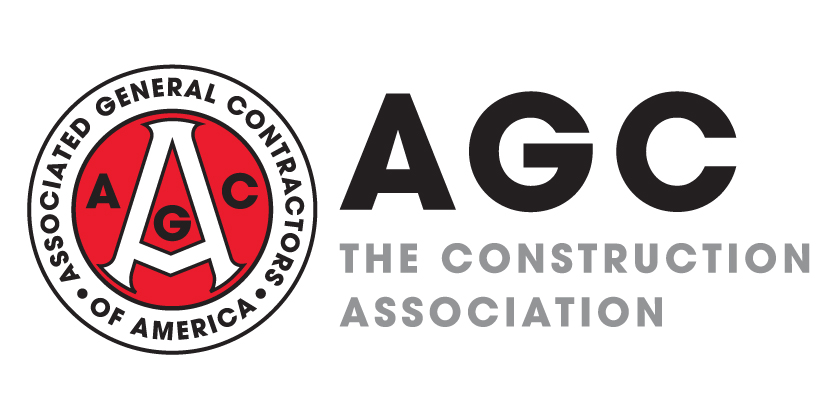
Nonfarm payroll employment in September increased by 136,000, seasonally adjusted, from August and by 2,147,000 (1.4%) year-over-year (y/y) from September 2018, the Bureau of Labor Statistics (BLS) reported today. The unemployment rate fell to a 50-year low of 3.5%, from 3.7% in the past three months. Construction employment rose by 7,000 for the month and 156,000 (2.1%) y/y to 7,510,000, the highest mark since November 2007. Although construction employment continues to grow faster y/y than overall employment, the industry's growth rate was the slowest in six years and less than half of the 5.0% rate a year earlier. Average hourly earnings in construction rose 2.2% y/y to $30.81, 9.7% above the average for all private-sector employees ($28.09, a 2.7% y/y increase). The unemployment rate in construction, not seasonally adjusted, decreased from 4.1% in September 2018 to 3.2% and the number of unemployed jobseekers with construction experience declined from 412,000 to 319,000. Both figures were the lowest for September since the series began in 2000. (Not-seasonally-adjusted data varies with normal weather and holiday patterns and thus should not be compared to levels in other months.) The slower hiring may reflect difficulty finding workers rather than a slump in demand; AGC's recent survey found 72% of respondents expect to expand.
In contrast to the Autodesk-AGC survey, which included responses from 1,935 AGC members, Engineering News Record reported on Wednesday that construction "industry execs increasingly believe that growth will end in 2020. The growing sense that a downturn is in the offing can be seen in the latest results of the ENR Construction Industry Confidence Index survey. The CICI fell seven points to 51 in the third quarter of 2019 from the second quarter of 2019. [A rating above 50 shows a growing market.] Of the 239 executives from large construction and design firms responding to the survey, many believe the market's growth is beginning to slow and it may begin declining by the end of this year. Most execs surveyed believe we are in the last phases of the growth cycle. Only 7% of survey respondents believe the market has started to decline now, while 12% believe the market will begin declining in three to six months. Just 16% say it will still be growing by the beginning of 2020. On the other hand, 37% believe the market will start to shrink in the next 12 to 18 months, compared to only 13% who believe it will still be in a growth mode in that time frame. The CICI measures executive sentiment about the current market, where it will be in the next three-to-six months and over a 12- to 18-month period. The index is based on responses to surveys sent between Aug. 15 and Sept. 23 to 6,000 U.S. companies on ENR's lists of leading general contractors, subcontractors and design firms....Among [15] individual market sectors, the only ones showing a strengthening were hospitals and health care, which rose two points to [69], the highest among the sectors measured by ENR, and the water, sewer and wastewater sector, which rose two points to 62. The biggest drops among markets were in the industrial and manufacturing sector, which fell 10 points to a 52 rating, reflecting concerns about the overall economy, and the transportation sector, which also fell 10 points" to 63.
Construction employment, not seasonally adjusted, increased between August 2018 and August 2019 in 252 (70%) of the 358 metro areas (including divisions of larger metros) for which BLS provides construction employment data, fell in 60 (16%) and was unchanged in 46, according to an analysis AGC released on Wednesday. (BLS combines mining and logging with construction in most metros to avoid disclosing data about industries with few employers.) The largest gains occurred in the Dallas-Plano-Irving division (12,400 combined jobs, 8%), followed by Phoenix-Mesa-Scottsdale (11,000 construction jobs, 9%) and the Los Angeles-Long Beach-Glendale division (9,600 construction jobs, 6%). The largest percentage gain occurred in Auburn-Opelika, Ala. (15%, 400 combined jobs) and Spokane-Spokane Valley, Wash. (15%, 2,400 combined jobs), followed by Omaha-Council Bluffs, Neb.-Iowa (14%, 4,300 combined jobs). The largest job losses occurred in Charlotte-Concord-Gastonia, N.C.-S.C. (-2,900 combined jobs, -4%), followed by Baton Rouge, La. (-2,600 construction jobs, -5%); Hartford-West Hartford-East Hartford, Conn. (-1,500 combined jobs, -7%); Silver Spring-Frederick-Rockville, Md. (-1,400 combined jobs, -5%); Fort Lauderdale-Pompano Beach-Deerfield Beach, Fla. (-1,300 construction jobs, -3%) and Longview, Texas (-1,300 combined jobs, -9%). The largest percentage losses occurred in Fairbanks, Alaska (-9%, -300 construction jobs) and Longview, followed by Houma-Thibodaux, La. (-8%, -400 construction jobs). Construction employment reached a record high for August in 68 metros (dating back in most areas to 1990); three areas set a new August low.
Construction spending totaled $1.287 trillion at a seasonally adjusted annual rate in August, 0.1% above the downwardly revised July rate and down 1.9% from August 2018, the Census Bureau reported on Tuesday. The year-to-date total for January-August combined was 2.1% lower than in the same months of 2018. Public construction increased 0.4% for the month and 5.7% year-to-date. The three largest public segments all had year-to-date gains: highway and street construction, 11%; education construction, 0.9%; and transportation construction, 9.3%. Private residential spending rose 0.9% in August but declined 8.6% year-to-date. New multifamily construction gained 6.5% year-to-date; new single-family construction fell 8.4%; and residential improvements tumbled 13%. Private nonresidential spending slid 1.0% in August and 0.1% year-to-date. Of the four largest components, power gained 6.2% year-to-date (comprising electric power, up 4.9%, and oil and gas pipelines and field structures, up 11%); commercial, -15% (comprising retail, -26%, and warehouse, -2.6%); manufacturing, 3.7%; and office, 7.7%.




